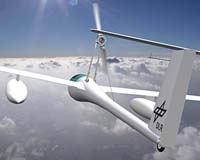 |
Manila, Philippines (UPI) Jul 9, 2009 The Asian Development Bank Thursday announced a program to help fund new technology to substantially reduce greenhouse gas emissions in China. The ADB will provide $1.25 million in technical assistance to fund the bulk of the $1.55 million project in the northern Chinese city of Tianjin. The balance will come from the Chinese government. The ADB's technical assistance will produce a comprehensive road map for carbon dioxide capture and storage demonstration projects, as well as policies, legal and regulatory frameworks to promote CCS use. In addition, the bank said it will identify priority demonstration projects and their financing needs, as well as undertake capacity assessment and comprehensive capacity development in critical areas of CCS demonstration. The CCS application on high-efficiency coal-fired power plants allows the capture and permanent storage of nearly all carbon dioxide emissions. CCS is particularly suited to the integrated gasification combined cycle power plant, which turns coal into synthetic gas to power gas turbines. The impurities from synthetic gas, including carbon dioxide, can be removed or captured before its combustion, which allows low-cost capture from a power plant. The technical assistance supports China's plan to develop its first IGCC demonstration power plant in Tianjin city, which is slated for possible ADB financing. "CCS is in its early stage of development globally, and demonstration projects need to be undertaken," ADB's senior energy specialist for East Asia, Ashok Bhargava, said in the bank's statement. "The full benefit of such a technology cannot be achieved unless it is used in major coal-based developing economies such as India and China," Bhargava said. China is the world's second-largest energy consumer after the United States and has the fastest-growing energy sector globally in terms of consumption and generation. As of 2007, nearly 83 percent of the country's total power generation came from the burning of coal. Globally, electricity generation accounts for nearly 30 percent of carbon dioxide emissions. Although China now gives more attention to diversifying the country's energy mix to include more renewable, nuclear and other alternative sources, coal is expected to remain the dominant source for electricity production until at least 2030. In announcing its new energy policy June 19, the ADB said that beginning in 2013 it will increase its target of clean energy investments to $2 billion a year from a previous target of $1 billion, in a bid to accelerate low-carbon growth and reduce greenhouse gas emissions in the Asia-Pacific region. The ADB is a regional development bank established in 1966 to promote economic and social development in Asian and Pacific countries through loans and technical assistance. It is a multilateral development financial institution owned by 67 members, 48 from the Asia-Pacific region and 19 from other parts of the globe. Share This Article With Planet Earth
Related Links Powering The World in the 21st Century at Energy-Daily.com
 World's first as fuel cell aircraft takes off in Germany
World's first as fuel cell aircraft takes off in GermanyHamburg, Germany (AFP) July 7, 2009 The world's first piloted aircraft capable of taking to the air using only power from fuel cells took off in Germany Tuesday, producing zero carbon dioxide emissions, its makers said. "We have improved the performance capabilities and efficiency of the fuel cell to such an extent that a piloted aircraft is now able to take off using it," said Johann-Dietrich Woerner from the German Aerospace ... read more |
|
| The content herein, unless otherwise known to be public domain, are Copyright 1995-2009 - SpaceDaily. AFP and UPI Wire Stories are copyright Agence France-Presse and United Press International. ESA Portal Reports are copyright European Space Agency. All NASA sourced material is public domain. Additional copyrights may apply in whole or part to other bona fide parties. Advertising does not imply endorsement,agreement or approval of any opinions, statements or information provided by SpaceDaily on any Web page published or hosted by SpaceDaily. Privacy Statement |